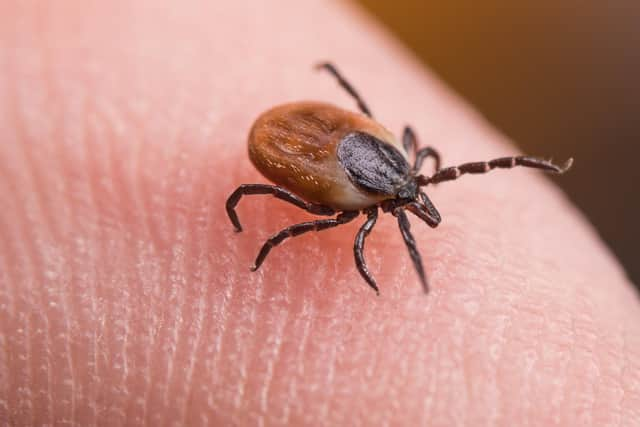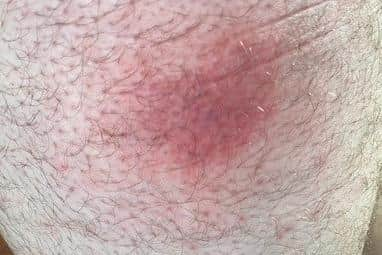Peak District walkers warned of huge rise in number of ticks found in countryside - carrying deadly Lyme disease
and live on Freeview channel 276
Farmers, gamekeepers and walkers report finding ticks ‘in droves’ on moorland in recent weeks, covering their clothing, skin and hair.
The number of ticks is increasing due to restrictions on sheep flocks, and limitations on cutting and burning vegetation introduced by Natural England, leading to an increased risk of disease for visitors, as well as those who live and work in these areas.
Advertisement
Advertisement
Moorland Association member Simon Gurney of Ladycross Moor said: “The number of ticks has increased dramatically in recent years and some areas are teeming with them. The risk of disease is a real concern. We need sheep in these landscapes – overgrown areas and bracken are jumping with ticks. The recent trend for ‘rewilding’ or leaving vegetation to grow unchecked, seems far too risky for human health, as the number of ticks is rising exponentially.”


More vegetation means more ticks and that means a greater likelihood of disease, including Lyme disease and tick-borne encephalitis. It is thought that climate change is also contributing to the problem.
Ticks are small blood-sucking arachnids which live in areas of grassland, moorland, forest and in parks and gardens. They feed on livestock, other animals, pets and humans.
Lyme disease is the most common of the diseases carried by ticks, with about 3,000 - 4,000 cases each year, according to the UK Health Security Agency. The number of cases has risen tenfold since 2001.
Advertisement
A bacterial infection, Lyme disease is hard to diagnose and is often mistaken for viruses such as covid, and other conditions such as ME, arthritis, or lupus. Symptoms can include fatigue, joint and muscle pain, flu-like symptoms, headache, stiff neck and nausea. In some cases Lyme disease can affect patients for decades. Model Bella Hadid recently spoke of her ten-year battle with Lyme disease.


Advertisement
Simon Gurney continued: “The way that we manage the land is important for a range of reasons - extensive areas of dense vegetation are an ideal breeding ground for ticks, bringing with them a risk of serious disease.
“Control of vegetation is also the most effective way to reduce the severity and spread of wildfires, which are becoming increasingly frequent.
“I would urge all land managers in the uplands to re-introduce conservation grazing and cutting or controlled burning to keep vegetation under control and to reduce the number of ticks.”
Advertisement
A study published in the British Medical Journal Global Health reported that ‘ecological changes’ are one reason for the increasing prevalence of ticks, with Western Europe the area most affected by Lyme disease.
Grouse moors are managed to prevent an over-abundance of tick-borne infections, which can prove fatal to red grouse and other birds, as well as causing disease in humans, dogs and horses.
Advertisement
Bracken spraying and limiting the amount of excess vegetation reduces the areas where ticks can proliferate. Sheep are treated with an acaricide which is harmless to them but kills the ticks, to protect pets and people.
What to do if you find a tick on your skin:
- Carefully remove the tick using a tick-removal tool or fine-tipped tweezers;
- Check the rest of your body for any other ticks – remember that a tick nymph can be as small as a poppyseed;
- Check children and pets for ticks too;
- If you see the tell-tale bull’s-eye rash around the tick bite, go to your GP and insist on high-strength broad spectrum antibiotics;
- Treatment should be started early for the best chance of success;
- Although not every tick carries disease, immediate removal of an attached tick is recommended;
- Visit Lyme Disease UK for advice and patient support.